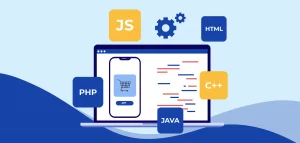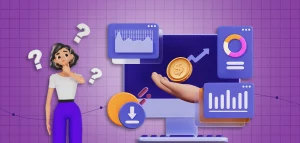Table of content
The Salesforce Lightning Scheduler is an element every business can get profit from, particularly in a post-pandemic world. The new normal situation has constrained organizations to adjust and this tool can adapt to the situation of meeting your needs of busy scheduling.
Evidently, appointment scheduling isn’t the most productive utilization of your time. The Salesforce Lightning Scheduler ensures the ability to book appointments straightforwardly in the hands of your clients. In this blog, we’ll examine Salesforce Lightning Scheduler and how it can improve your present Salesforce use, and provide an overview of the advantages and benefits.
What is the Salesforce Lightning Scheduler?
Salesforce Lightning Scheduler is a Salesforce add-on that permits your customers to schedule appointments with your business. In other words, this tool empowers its customers to plan a meeting, video call, phone call, or in-person discussion with your colleagues, on your website.
Salesforce Lightning Scheduler use cases, support location, and ensure controlled booking. It implies your clients can schedule depending on factors, such as resource limit, available room space, or operational hours. With improved permeability, you can assign available resources more proficiently, better serve your customers, and make reliable encounters across channels.
The Salesforce Lightning Scheduler uses multiple core data models and functionalities of Salesforce Field Service. Despite the fact it’s designed for all types of businesses. All things considered, it’s more suitable for organizations with less complex service requirements. If you require more advanced features and highly customizable options, then you might need to implement Salesforce Field Service.
Key Features of Salesforce Lightning Scheduler
- Clients can straightforwardly schedule appointments on your website
- Manage from anywhere the virtual or in-person appointments
- Implant appointments into standard Salesforce workflows
- Allow the right authorizations to the right employee
- Simple to cancel or edit appointments
- Enable your clients to schedule meetings across a wide range of channels
- Set up territories
- Leverage all your client data previously stored in Salesforce
- Add all the data you want into the appointments notes
- Automated assignments provide a smooth encounter, empowering employees to give more reliable customer assistance
- Receive valuable feedback
Integrate Salesforce Lightning Scheduler Into Your Existing Field Operations
New Fieldspace
Field Service Organizations, or organizations that a significant part of their business happens outside the limitations of their own workplaces or stores, had it hard during 2020. Straightforward tasks like making a home visit to fix a glitch have turned into administrative and logistic issues. Administration Services have become much harder.
Since an understanding that this is certainly not a passing craze, that the pandemic is having a long-lasting impact on how field administration is completed. Organizations are re-evaluating their client communication processes by implementing Salesforce tools.
Organizations are less ‘anxious’ to go out to the field and clients are less ‘anxious’ to let specialists access their homes. As an alternative; Virtual appointments, remote conferences, drop-offs, and deliveries- limited face-to-face.
Organizations that utilize Field Service Lightning (Salesforce Field Service starting as of recently) have a suitable and accessible answer for coordinating virtual appointments and interviews into the activity – Lightning Scheduler, an appointment booking solution from Salesforce.
Lightning Scheduler Vs. Field Service Lightning
Lightning Scheduler is intended for booking appointments, while Field Service Lightning (FSL) is intended for scheduling resources. The differentiation is quite evident and straightforward. Another method of understanding the difference is that FSL is designed for delegating mobile laborers, while Lightning Scheduler is designed for virtual and on-site appointments.
Clearly, between the two systems, there is some overlapping. However, Salesforce Implementation in the organizations that need to begin reconfiguring their field activity. Along with incorporating virtual assistance into their business processes, are very much encouraged to integrate Lightning Scheduler into the ongoing Field Service Lightning system.
Analyzing the Correct Balance of Service
Field Services are now entrusted with reducing the frequency of ‘going out to the field’. Rather than sending a specialist technician to a client’s home to deal with a glitch. Can connect via telephone assistance to determine the issue and instruct the customer to perform some simple steps initially. In the event that that fails, then send the expert to resolve the issue.
In reference to that, numerous decisions should be taken to devise new business flows that exercise the best available options and use both systems, i.e., FSL, and Lightning Scheduler; when is a leading virtual meeting sufficient, and when is dispatching an absolute necessity?
The tried and tested, successful execution of virtual appointments into everyday activity can possibly affect the ‘field-side’ of your business. This means, less dispatching, reduction in travel, the minimum moveable labor force – all these things lead to minimizing expenses. While minimizing expenses is consistently an objective of any business. The key here is to track down the right balance and harmony between virtual and field, between quality and cost, and between Lightning Scheduler and FSL.
Thus, the expected advantages of incorporating virtual assistance with the execution of Lightning Scheduler are accompanied by new challenges that should be taken care of. Transfer of information and sharing across multiple service providers of an organization that are remote and stationery – is one of those difficulties.
The objective is to have a 360 degree perspective on client experiences and services, that consolidates the in-person and virtual communications. Organizations should set up a system that delivers that 360-degree view. And knows how to follow both customers and technicians, from start to finish.
Measures of Enhancing Efficiency
Installation of any new system should be followed by preventive measures; of the business’s efficiency and cost efficiency, quality services, customer satisfaction with service delivery, and interaction with people. In addition to this, we should consider that the two don’t dependably go hand in hand. The issue may have been fixed, despite that, the client could be left with an unpleasant experience. About the collaboration with the specialist service provider, or dissatisfaction with the time and efforts spent in getting and finishing the service.
The capacity to introduce effective solutions for the various perspectives of services is a pivotal one for enhancing your field activities. Particularly when an organization is putting forward the initial step with a new modus operandi. Also for most field service organizations, integration of virtual services into their functional processes is an obscure territory.
Salesforce Lightning Scheduler Adapter
The experts apply a unique adapter for Salesforce Lightning Scheduler that eliminates most of the issues involved in appointment scheduling and assists you with staying in contact with customers through their entire journey process, anytime, and anywhere. With experts, clients can now choose the merged accessibility from both Salesforce and Outlook/Gmail calendars when booking through the Lightning Scheduler.
In addition to that, experts refresh and synchronize all information between the Salesforce CRM, Outlook, Gmail, and Office 365 progressively. There are no clashing meetings, lost track of time schedules, or missed information of events with the Salesforce Lightning Scheduler Adapter. The users likewise never again need to switch back-and-forth between Outlook or Gmail and Salesforce or manually duplicated events scheduled.
How Supersourcing Can Help?
Having the detailed knowledge on both Field Service Lightning and Lightning Scheduler, combined in a way with proven expertise services, experience implementation, permits us to furnish businesses. With a careful analysis of their present status of services and the process requires adjustment to the new reality imposed on field services.
Moreover, having worked on different industries and business verticals has given us a special ability to completely comprehend your business needs, and how to use the Salesforce Implementation Services to fulfill those requirements.
Apart from that, we can extend more services. Such as leading you in your work to coordinate with Lightning Scheduler into your ongoing field operations in the most time and cost-effective manner, so your business can quickly get adept to the new normal. For further detailed assistance, you can connect with our experts and discuss your business needs.
FAQs
1. How do I schedule meetings in Salesforce?
The organizers can schedule meetings with their contacts and leads or start an instant meeting without any prior scheduling. The meeting subject will automatically considered as the title for the meeting. You can easily find it in your GoToMeeting web account. Apart from that, you can also plan the meeting in advance too with all the relevant details and send the invites to applicable attendees.
2. How to create a Scheduler Class in Salesforce?
It is possible to create a class scheduler from the user interface by following the below steps:
- Click on Setup, find Apex in the Quick Find box, and then choose Apex Classes.
- Click Schedule Apex.
- Enter your task/job’s relevant name, for instance– Daily Account Update.
- Click the lookup button to search the class scheduler and select the class.
- Select frequency i.e., Weekly or Monthly and customize options as required.
- Select your initial and end dates, and also the expected start time to join the meeting.
- Click on Save.
3. What is Cloud Scheduler in Salesforce?
Cloud Scheduler in Salesforce automation permits the user to request for meeting with clients and associates, and lets clients and colleagues select when they can meet before the organizer affirms meeting times. The New Meeting Request button allows clients to request meeting scheduling by using Cloud Scheduler. By default, it gets added on the Home page under the Calendar component, and in the Open Activities related list for leads, contacts, and individual accounts (when enabled).
4. Can I Schedule an email in Salesforce Lightning?
As a salesperson sends email messages to their contacts and leads, they can schedule the mail. So they show up at the most ideal time to the receiver. On Lightning Experience, set up the Scheduled Emails with the target that the concerned representative. Can update the content details as per requirement of a scheduled email and edit its scheduled time and date to schedule the mail delivery.







